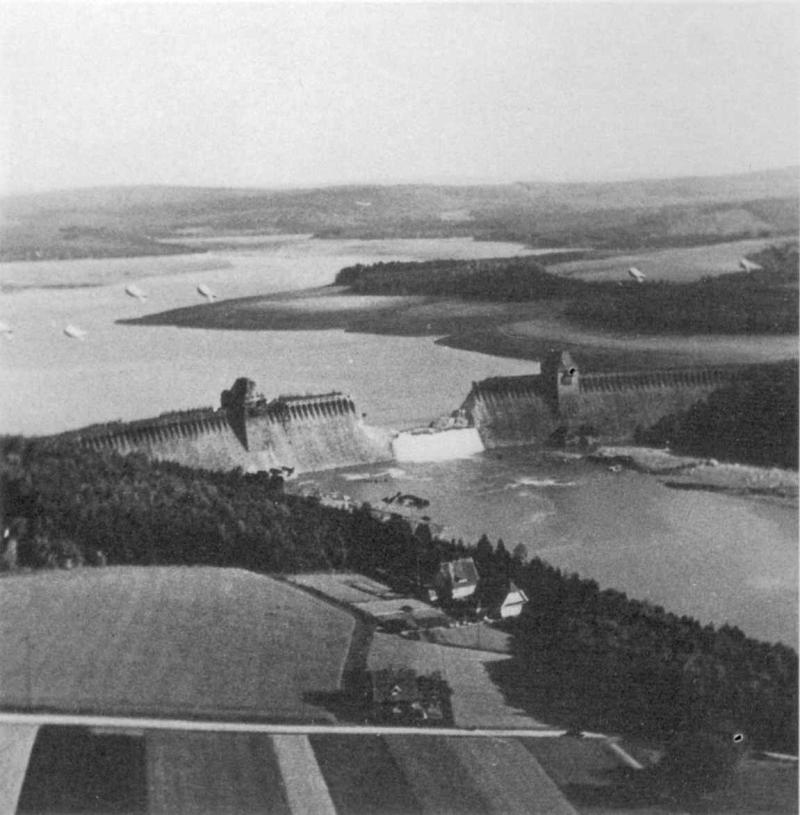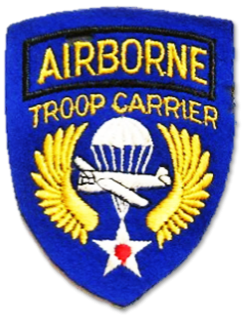St Vincent's Hall, Grantham

A photograph of the breached Möhne Dam taken by Flying Officer Jerry Fray of No 542 Squadron from his Spitfire PR IX, with six barrage balloons above the Dam. (Flying Officer Jerry Fray RAF, Public domain, via Wikimedia Commons)
St Vincent's Hall, a striking Gothic Revival mansion in Grantham, Lincolnshire, played a vital role during the Second World War as a key military command centre. From late 1937 until November 1943, it was the Headquarters of No 5 Group, RAF Bomber Command. When war broke out in September 1939, No 5 Group had eight squadrons of Handley-Page Hampden medium bombers spread across five airfields. They were gradually replaced by the troublesome Avro Manchester in 1941-42 but these in turn were replaced by the highly successful Avro Lancaster. By spring 1943, No 5 Group had become the first Group to be equipped solely with Lancasters, 180 of which were distributed among ten squadrons on eight airfields.
On the night of 16/17 May 1943, Lancasters of No 617 Squadron led by Wing Commander Guy Gibson flew from RAF Scampton to attack large dams in the Ruhr and Eder valleys of Germany. Some of the operational planning had been carried out at St Vincent's Hall. While the mission was on, Air Marshal Sir Arthur Harris (Air Officer Commanding RAF Bomber Command), Barnes Wallis (designer of the special weapon used to breach the dams) and Air Commodore The Hon Ralph Cochrane (Air Officer Commanding No 5 Group) waited in the operations bunker at St Vincent's Hall for the morse transmissions from the bomber crews, informing them how the attack was proceeding. Afterwards, they drove to RAF Scampton to meet the returning crews. Of the 19 aircraft that set off on the attack, only 11 returned; 53 airmen were killed and three were taken prisoner.

In November 1943, No 5 Group moved its Headquarters to Morton Hall, near Lincoln, and the Headquarters of the US IX Troop Carrier Command moved in. It was to stay at St Vincent's Hall until September 1943, when it re-located to Ascot in Berkshire and remained there for the rest of the war.
In early 1944, an Advanced Headquarters for IX Troop Carrier Command was set up at Eastcote, Middlesex, so that its senior staff could be closer to the planners for Operation NEPTUNE (D-Day, 6 June 1944) and Operation MARKET GARDEN (the Allied attempt to drive a corridor from Belgium through the Netherlands to the German border in September 1944).
In September 1944, Headquarters IX Troop Carrier Command moved to Sunninghill Park in Ascot, Berkshire. It remained there until September 1945, when it returned to the United States; it was inactivated in March 1946 and finally disbanded in October 1948.
During its existence in Europe, aircraft from IX Troop Carrier Command provided crucial support to major Allied operations, including:
Operation DRAGOON (Allied landings in the south of France in August 1944; support included specialist Pathfinders - see their story here: US Airborne Pathfinders in World War II).
Operation VARSITY (Allied crossing of the River Rhine in March 1945; support included specialist Pathfinders - see their story here: US Airborne Pathfinders in World War II).
Operation DOOMSDAY (taking the surrender of German troops in Norway, maintaining order and aiding the transition to civilian rule).
Operation ECLIPSE (taking the surrender of German troops in Denmark, maintaining order and aiding the transition to civilian rule).
In addition, its aircraft flew thousands of individual support missions to drop supplies and evacuate wounded troops from the battlefields of Europe.
PLEASE NOTE: ST VINCENT'S HALL IS A PRIVATE RESIDENCE AND IS NOT OPEN TO THE PUBLIC. PLEASE RESPECT THE OWNERS' PRIVACY.